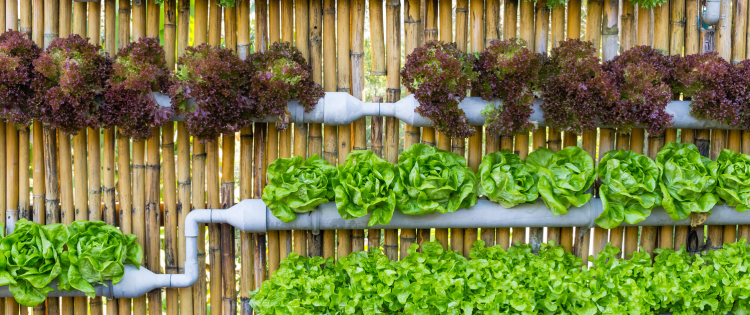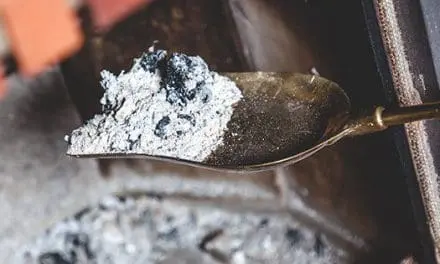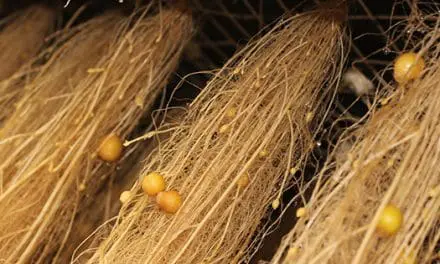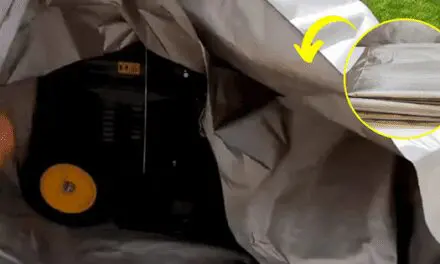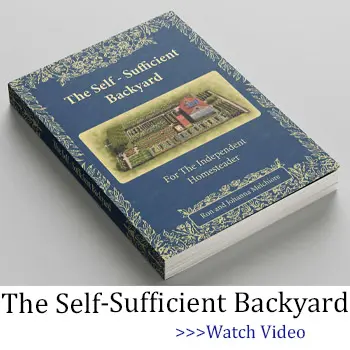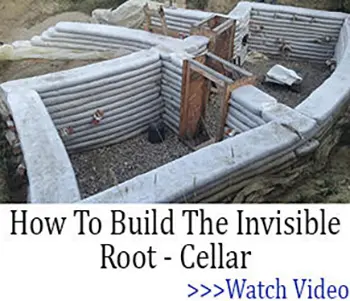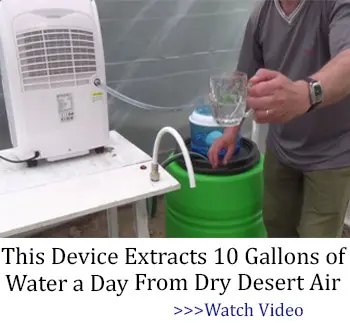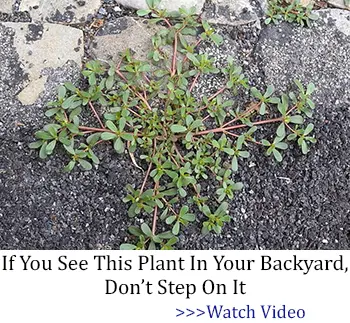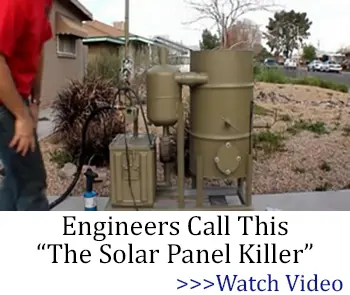A lot of people are aware of aeroponics and when you first hear how it works it would be no surprise if it left you scratching your head. Aeroponics is about growing vegetables in tanks or towers without soil. Hydroponics uses an enriched water solution to help plants grow, but aeroponics leaves the roots exposed to the air.
What makes it all work is regular misting of the roots with an enriched fertilizer solution directed at the exposed roots. It’s actually a concept that NASA has developed to grow vegetables in space. That’s because aeroponics uses 90% less water than traditional planting in soil.
Another factor that makes aeroponics work is oxygen. When the roots are exposed to oxygen in the air it powers plant growth.
It’s a great approach to growing your own if you live in an area where the soil is extremely poor or if you live in an apartment or townhouse without a backyard.
What’s so surprising if you’re hearing about this for the first time is that it actually works and if misted properly and regularly delivers a very good yield.
The Best Crops for Aeroponics
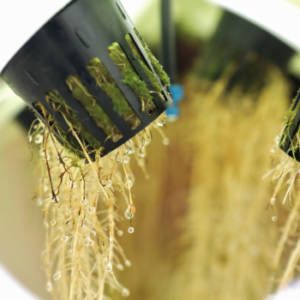
Not everything can grow with aeroponics but there are some plants that thrive in an aeroponic system. Here are some of the best vegetables and herbs to consider for aeroponics:
Lettuce (all varieties), Strawberries, Cherry tomatoes, Mint, Basil, Peppers, Cucumbers, Spinach, Kale, Radishes, Thyme, Cilantro, Parsley, Rosemary, Dill, Sage, Chickpeas, Lentils, Peas, Green beans, Kidney beans.
Vegetables that should not and basically cannot be grown with aeroponics include:
Potatoes and Sweet Potatoes, Large Root Vegetables like turnips, onions, garlic, carrots, and rutabaga, Corn, Vine Crops like squash, Melons.
Something else that grows well in this system is medicinal herbs. I found a great kit with 4,818 high-quality, NON-GMO seeds packaged in the US, that you can turn into hundreds of powerful natural remedies without spending a dime at the pharmacy anymore. It’s called the Medicinal Garden Kit and you can find it here. But you might wanna hurry, cause it’s that good it’s usually sold out.
The Aeroponic Tank
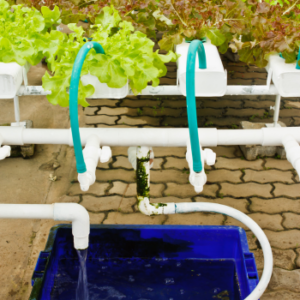 Growing vegetables and fruit is done in something called an aeroponic tank. You can build your own but it’s easier to buy one online. Here are the basic components that make this an ideal system for rapidly growing a range of vegetables and herbs.
Growing vegetables and fruit is done in something called an aeroponic tank. You can build your own but it’s easier to buy one online. Here are the basic components that make this an ideal system for rapidly growing a range of vegetables and herbs.
- It starts with a large tank that can contain a volume of water.
- A lid is designed to fit tightly to the top of the tank with holes in the top spaced across the middle of the lid from end to end. 4 holes seem to be the average. These holes will allow you to push the roots of your plant into the tank while supporting the top of the plant. The idea is to have the plant roots suspended in the air toward the top of the tank. You should also leave a couple of holes offset on either side of the lid to allow some air circulation.
- The bottom of the tank contains a volume of enriched water.
- A pump setup is immersed in the water.
- A mister setup is inserted into the top of the pump across the middle of the tank. The number of misters is determined by the number of holes you have in the lid.
- A timer is attached to the pump so you can set misting times to keep the roots moist and the plant fed by the enriched solution.
- The tank should be set up in a sunny location.
- The only maintenance step is to make sure the enriched water solution level is maintained, although one of the benefits of an aeroponic tank is that the sealed lid prevents evaporation, and some of the mist will drift down and back into the water. But remember there needs to be some level of air circulation.
- Another thing to consider is an aquarium pump with a small hose inserted into the lid with a bubbler stone commonly used in aquariums. One of the keys to aeroponics is oxygen in contact with the roots and this will guarantee you get the oxygen into the tank.
- Grow lights are another consideration. If you set them up over the tank you can easily grow your vegetables and herbs indoors.
You Start with Sprouted Plants
You can’t start plants from seed with aeroponics. The plants need to be sprouted. The typical recommendation is that the plant should be at least 4 inches high, but it really depends on the size of the root system.
You also need to carefully rinse any dirt from the roots when you pull it from the soil. Exposure to oxygen in addition to the mist water is what aeroponics is all about. In time the mist will cause any dirt to fall off but it’s wise to get those roots off to a good start.
The Enriched Water Solution
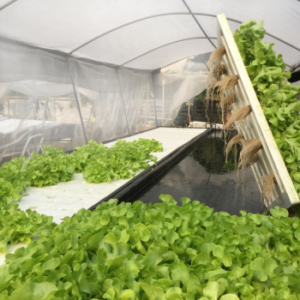 One of the keys to success with aeroponics is adding plant food to the water to keep the growing plants well-fed. Miracle Grow is one possibility, but you can consider any plant food you prefer. It’s hard to estimate the amount of food because tank sizes vary but it makes sense to add the proportions of food that the package recommends to a gallon of water and figure out the proportions for the amount of water you pour into your tank. Another solution is using rainwater for your plants. Rainwater contains nitrogen, phosphorus, potassium, calcium, magnesium, and sodium. Nitrogen, in particular, is a well-known nutrient for plants, often found in fertilizers, and it helps the growth of plants and vegetables. You can make your own pressurized rainwater-catching system using just a few materials you might already have in your backyard and the instructions from this guide.
One of the keys to success with aeroponics is adding plant food to the water to keep the growing plants well-fed. Miracle Grow is one possibility, but you can consider any plant food you prefer. It’s hard to estimate the amount of food because tank sizes vary but it makes sense to add the proportions of food that the package recommends to a gallon of water and figure out the proportions for the amount of water you pour into your tank. Another solution is using rainwater for your plants. Rainwater contains nitrogen, phosphorus, potassium, calcium, magnesium, and sodium. Nitrogen, in particular, is a well-known nutrient for plants, often found in fertilizers, and it helps the growth of plants and vegetables. You can make your own pressurized rainwater-catching system using just a few materials you might already have in your backyard and the instructions from this guide.
Troubleshooting
One of the problems you might encounter is mold growth on the roots. If you think about it, a misty, humid environment is a good environment for mold. Keep an eye on your plants and from time to time lift the lid and check the roots. If you detect any mold you could add a mold-killing solution used for plants to the water, or spray the affected roots directly.
Another thing to keep an eye on is your water quality. Over time it’s possible that bacteria may start to grow in the water and cause it to become discolored or have a smell.
If that happens you need to carefully remove the lid with the plants and support it while you empty the tank and refill it. It will not harm the plants because they are used to being exposed to air. Give the tank a good rinse and then replace the pump, make an enriched water solution pour it into the tank, and return the plants. Mist the plants immediately and reset your timer.
And It’s More Than Water Tanks
Another aeroponic design is a large cylinder about 1 foot in diameter and anywhere from 6 to 8 feet tall. Holes are drilled around the cylinder with small supports under the holes for the plant. The water reservoir is at the bottom and a long pipe is in the middle with multiple misters running up the length of the pipe. This is a common setup when aeroponics is used commercially, but if you have the room you can build your own outdoors or even indoors. The challenge is making sure all of the emerging plants get enough light.
Regardless of how you approach aeroponics, it’s a surprisingly effective growth system that is growing both with home gardeners and commercial growers. It’s worth a try and you might be surprised by the results.
You may also like:
 Why You Should Worry If You See This Butterfly In Your Garden
Why You Should Worry If You See This Butterfly In Your Garden
An Insanely Effective Way To Build A 5 Year Food Stockpile (Video)
This Is The No #1 Enemy Of Potatoes
This Is Why The Government Doesn’t Want You To Be Self-Sufficient
10 Bugs You Should Never Kill In Your Garden

